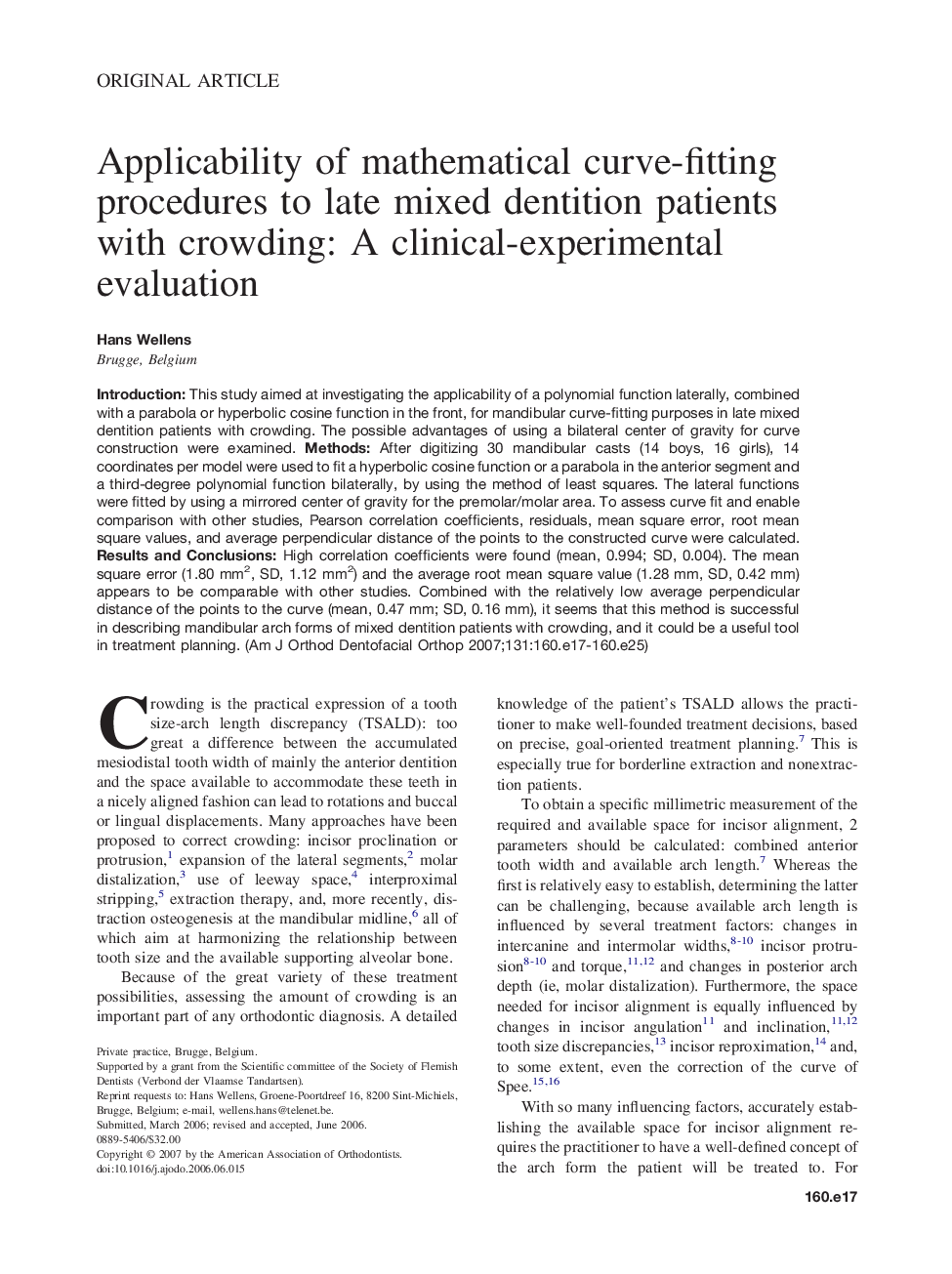| Article ID | Journal | Published Year | Pages | File Type |
|---|---|---|---|---|
| 3119294 | American Journal of Orthodontics and Dentofacial Orthopedics | 2007 | 9 Pages |
Abstract
Introduction: This study aimed at investigating the applicability of a polynomial function laterally, combined with a parabola or hyperbolic cosine function in the front, for mandibular curve-fitting purposes in late mixed dentition patients with crowding. The possible advantages of using a bilateral center of gravity for curve construction were examined. Methods: After digitizing 30 mandibular casts (14 boys, 16 girls), 14 coordinates per model were used to fit a hyperbolic cosine function or a parabola in the anterior segment and a third-degree polynomial function bilaterally, by using the method of least squares. The lateral functions were fitted by using a mirrored center of gravity for the premolar/molar area. To assess curve fit and enable comparison with other studies, Pearson correlation coefficients, residuals, mean square error, root mean square values, and average perpendicular distance of the points to the constructed curve were calculated. Results and Conclusions: High correlation coefficients were found (mean, 0.994; SD, 0.004). The mean square error (1.80 mm2, SD, 1.12 mm2) and the average root mean square value (1.28 mm, SD, 0.42 mm) appears to be comparable with other studies. Combined with the relatively low average perpendicular distance of the points to the curve (mean, 0.47 mm; SD, 0.16 mm), it seems that this method is successful in describing mandibular arch forms of mixed dentition patients with crowding, and it could be a useful tool in treatment planning.
Related Topics
Health Sciences
Medicine and Dentistry
Dentistry, Oral Surgery and Medicine
Authors
Hans Wellens,
